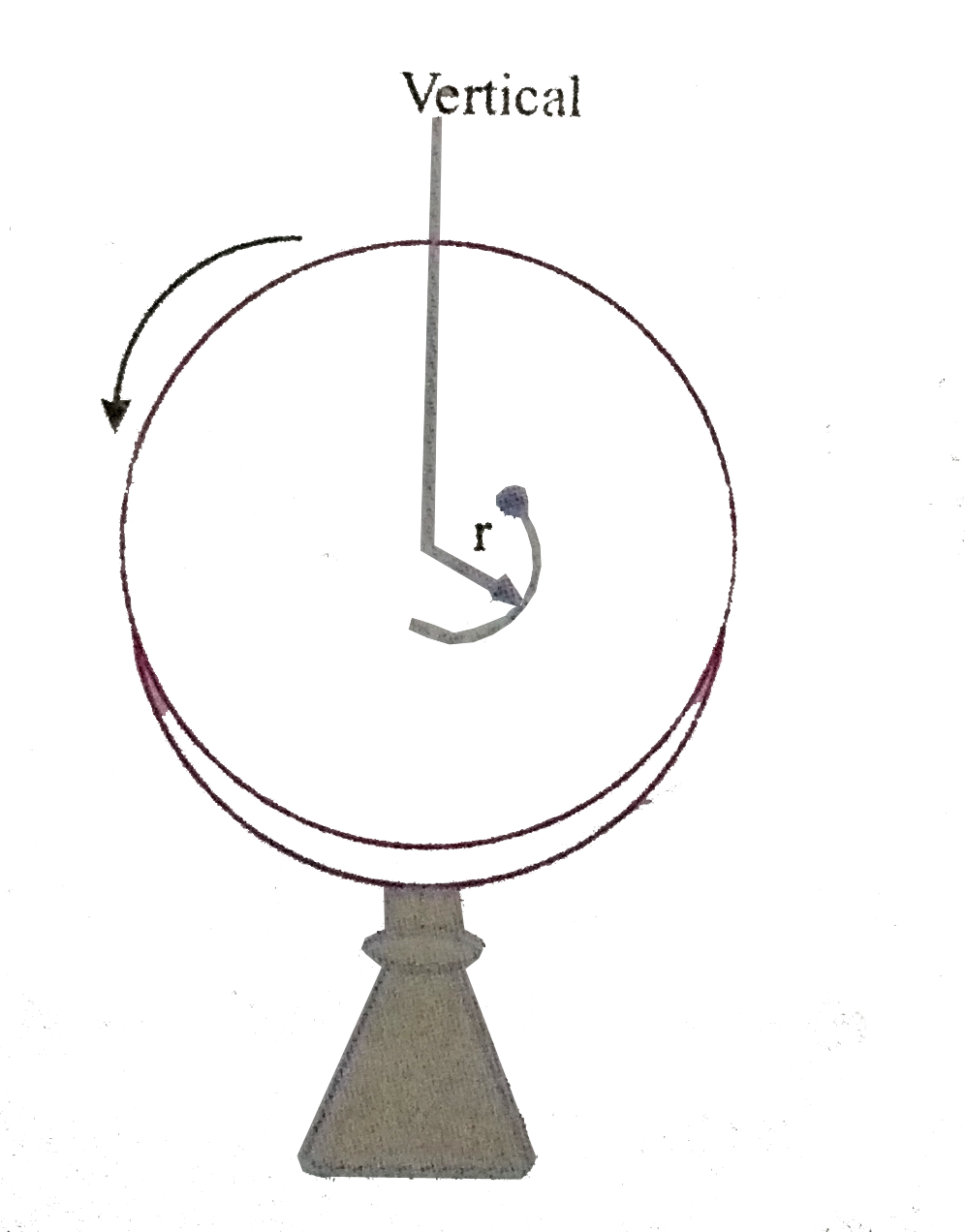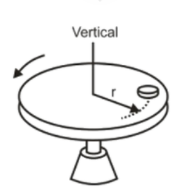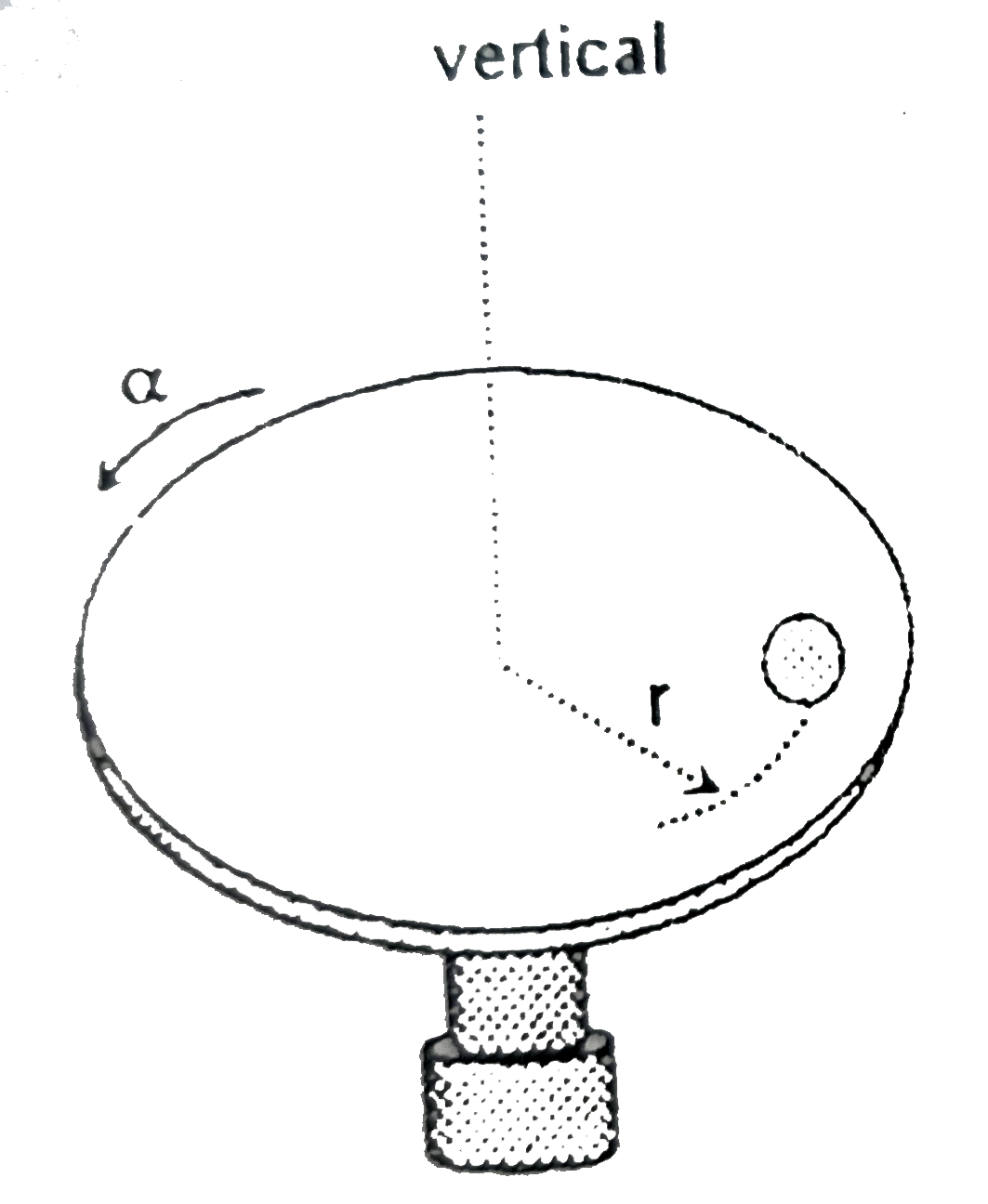A small coin of mass 80g is placed on the horizontal surface of a rotating disc. The disc starts from rest and is given a constant angular acceleration α=2rad/s2. The coefficient of static friction between the coin and the disc is μs=3/4 and cofficient of kinetic friction is μk=0.5. The coin is placed at a distance r=1m from the centre of the disc. The magnitude of the resultant force on the coin exerted by the disc just before it starts slipping on the disc is

0.2 N
0.3 N
0.4 N
0.5 N
The correct Answer is:D
Step by step video, text & image solution for A small coin of mass 80g is placed on the horizontal surface of a rotating disc. The disc starts from rest and is given a constant angular acceleration alpha=2rad//s^(2). The coefficient of static friction between the coin and the disc is mu_(s)=3//4 and cofficient of kinetic friction is mu_(k)=0.5. The coin is placed at a distance r=1m from the centre of the disc. The magnitude of the resultant force on the coin exerted by the disc just before it starts slipping on the disc is by Physics experts to help you in doubts & scoring excellent marks in Class 12 exams.
Updated on:21/07/2023Topper's Solved these Questions
Similar Questions
A small coin of mass 40 g is placed on the horizontal surface of a rotating disc. The disc starts from rest and is given a constant angular acceleration α=2 rad s−2. The coefficient of static friction between the coin and the disc is μs=3/4 and the coefficient of kinetic friction is μk=0.5. The coin is placed at a distance r=1m from the centre of the disc. The magnitude of hte resultant force on the coin exerted by the disc just before it starts slipping on the disc is :

View SolutionA coin placed on a horizontal rotating disc, with its centre at 10 cm from the centre of the disc, is about to slip off when the disc performs 60 rpm. Find the coefficient of friction between the coin and the disc.
View Solution
Knowledge Check
A disc of radius 0.1 m starts from rest with an angular acceleration of 4.4rad/s2 .Then linear velocity of the point on its after 5 s is
A0.22/sB2.2m/sC4.4m/sD1.1m/sThe coefficient of static friction between a small coin and the surface of a turntable is 0.30 . The turntable rotates at 2rads−1. What is maximum distance from the centre of the turntable at which the coin will not slide ?
A7.5 mB1.5 mC0.15 mD0.75 mA coin just remains on a disc rotating at a steady rate of 180r.p.m .A coin is kept at a distance of 2 cm from the axis of rotationn . The coefficient of fricition between the coin and the disc is _____ [gg=9.8m/s2]
A0.524B0.624C0.724D0.824
A disc of radius R rotates from rest about a vertical axis with a constant angular acceleration such that a coin placed with a tangenitial between a as shown in figure If the coefficient of static friction between the coin and disc is μs .Find the velocity of the before it start sliding relative as the disc

View SolutionA gramophone disc rotates at 60 rpm. A coin of mass 18 g is placed at a distance of 8 cm from the centre. Calculate the centrifugal force on the coin. Take π2=9.87.
View SolutionA small coin is placed on a stationery horizontal disc at a distance r from its centre. The disc starts rotating about a fixed vertical axis through its centre with a constant angular acceleration α. Determine the number of revolutions N, accomplished by the disc before the coin starts slipping on the disc. Find the coefficient of static friction between the coin and the disc is μ9.

View SolutionA coin is placed on the horizontal surface of a rotation disc. The distance of the coin from the axis is 1 m and coefficient of friction is 0.5. If the disc starts from rest and is given an angular acceleration 1√2 rad /sec2, the number of revolutions through which the disc turns before the coin slips is
View SolutionA gramphone record is revolving with an angular velocity ω. A coin is placed at a distance R from the centre of the record. The static coefficient of friction is μ. The coin will revolve with the record if
View Solution
